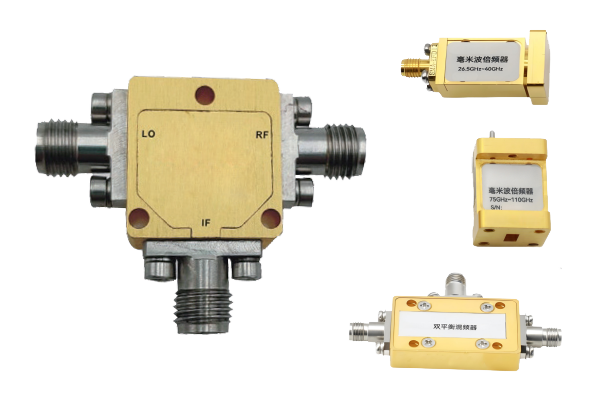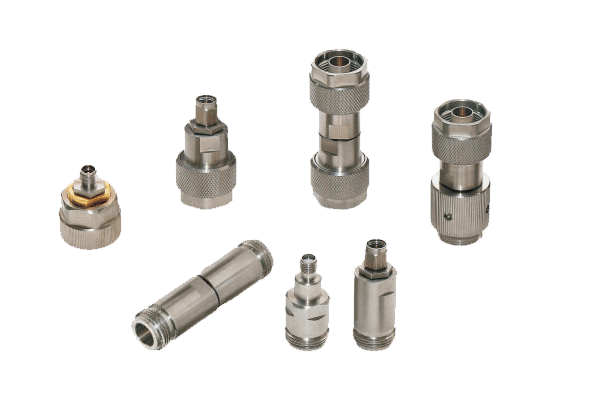
Pin diode components are considered indispensable in advanced RF applications because of their core operational properties Their fast toggling behavior plus small capacitance and reduced insertion loss renders them apt for use in switch modulator and attenuator circuits. The operative principle for PIN diode switching centers on bias-controlled current modulation. Voltage bias impacts the depletion layer width across the junction and consequently the conduction. Adjusting the bias enables PIN diodes to be switched for high-frequency operation while minimizing distortion
In systems that require precise timing and control PIN diodes are commonly integrated into sophisticated circuit topologies They can serve in RF filter networks to selectively transmit or block specific frequency ranges. Also their capacity to manage high power signals makes them applicable to amplifiers power dividers and signal generators. Miniaturized high-efficiency PIN diodes now find more applications in wireless and radar technologies
Coaxial Switch Architecture and Performance Review
Coaxial switch engineering is a complex undertaking requiring careful attention to multiple interacting factors Key factors such as switch category operating band and insertion loss shape the coaxial switch performance. A good coaxial switch design aims to minimize insertion loss and maximize isolation across ports
Performance studies concentrate on return loss insertion loss and isolation measurements. These metrics are commonly measured using simulations theoretical models and experimental setups. Reliable operation of coaxial switches demands thorough and accurate performance analysis
- Simulations combined with analytic methods and practical experiments are standard for coaxial switch evaluation
- Temperature fluctuations impedance mismatch and manufacturing inconsistencies can strongly alter switch performance
- Recent advances emerging trends and novel developments in coaxial switch design focus on improving metrics while reducing size and power use
Optimizing LNA Designs for Performance
Improving LNA performance efficiency and gain is key to maintaining high signal fidelity across applications This requires careful selection of transistors bias conditions and circuit topology. Sound LNA architectures control noise contributions and support strong low-distortion amplification. Modeling and simulation tools enable assessment of how transistor choices and biasing alter noise performance. Lowering the Noise Figure is the aim, indicating enhanced preservation of input signal over generated noise
- Choosing transistors with inherently low noise characteristics is critically important
- Using appropriate optimal bias schemes is important to control transistor noise
- Circuit topology significantly influences overall noise performance
Tactics like impedance matching noise mitigation and feedback regulation advance LNA performance
PIN Diode Based RF Switching and Routing

PIN diode based routing offers versatile efficient control of RF signal paths These semiconductors can be rapidly switched on or off allowing dynamic path control. Low insertion loss combined with excellent isolation is a primary advantage that reduces signal degradation. Common uses encompass antenna selection duplexers and phased array implementations
The switching behavior is governed by voltage driven modulation of the diode’s resistance. In the open or deactivated condition the device offers large resistance that prevents signal passage. A positive bias drives the diode into lower resistance so RF energy can pass through
- Additionally moreover furthermore PIN diode switches offer rapid switching low power consumption and compact size
Multiple architectures designs and configurations of PIN diode switch networks can be constructed to deliver advanced routing functions. Through interconnection of switches one can construct dynamic matrices for adjustable signal path routing
Assessing the Efficacy of Coaxial Microwave Switches

Testing and assessment of coaxial microwave switches are crucial to ensure efficient operation within systems. Diverse factors including insertion reflection transmission loss isolation switching speed and frequency span impact performance. Thorough evaluation entails measurement of these parameters under diverse operational environmental and testing circumstances
- Furthermore the testing should cover reliability robustness durability and resistance to harsh environmental influences
- Finally results from comprehensive testing offer crucial valuable essential data to inform selection design and optimization of switches for particular applications
LNA Noise Minimization Techniques A Detailed Review
Low noise amplifier designs are vital to RF wireless systems for amplifying weak signals and controlling noise. The paper provides a comprehensive examination analysis and overview of techniques aimed at lowering noise in LNAs. We explore investigate and discuss key noise sources including thermal shot and flicker noise. We also review noise matching feedback implementations and biasing tactics aimed at reducing noise. The review underlines recent breakthroughs like innovative materials and circuit architectures that achieve lower noise figures. Providing comprehensive insight into noise management principles and approaches the article benefits researchers and engineers in RF system development
High Speed Switching Applications for PIN Diodes

Their remarkable unique and exceptional electrical traits make them apt for high speed switching systems Their low capacitance and resistance aid rapid switching speeds to meet demands requiring precise timing control. In addition PIN diodes display linear voltage response that supports precise amplitude modulation and switching performance. Their adaptable flexible and versatile nature makes them suitable applicable and appropriate for broad high speed applications Use cases cover optical communications microwave circuitry and signal processing devices and equipment
Coaxial Switch Integration and IC Switching Technology
Integrated circuit coaxial switching technology brings enhanced capabilities for signal routing processing and handling within electronics systems circuits and devices. IC coaxial switch solutions orchestrate control management and directed signal flow through coaxial media while keeping high frequency performance and reduced latency. Miniaturization inherent in IC technology yields compact efficient reliable and robust designs suited for dense interfacing integration and connectivity requirements
- By meticulously carefully and rigorously applying these methods developers can produce LNAs with superior noise performance enabling sensitive reliable electronics By meticulously carefully and rigorously applying these methods developers can produce LNAs with superior noise performance enabling sensitive reliable electronics Through careful meticulous and low-noise amplifier rigorous implementation of these approaches engineers can achieve LNAs with exceptional noise performance supporting sensitive reliable systems With careful meticulous and rigorous deployment of these approaches developers can accomplish LNAs with outstanding noise performance enabling trustworthy sensitive electronics
- Deployment areas span telecommunications data communications and wireless networking environments
- Coaxial switch IC implementations support aerospace defense and industrial automation applications
- Consumer electronics audio visual equipment and test and measurement systems are typical domains
Design Considerations for LNAs at mmWave Frequencies

mmWave LNA challenges include significant signal attenuation and greater sensitivity to noise sources. At high mmWave frequencies parasitic capacitances and inductances can dominate requiring precise layout and part selection. Keeping input mismatch low and power gain high is critical essential and important in mmWave LNA designs. Devices such as HEMTs GaAs MESFETs and InP HBTs are important selections to meet low noise figure goals at mmWave. Furthermore the design and optimization of matching networks is crucial to securing efficient power transfer and impedance match. Careful management of package parasitics is necessary to prevent degradation of mmWave LNA performance. Implementing low-loss transmission lines along with proper ground plane design is essential necessary and important for reducing reflection and ensuring bandwidth
Modeling Strategies for PIN Diode RF Switching
PIN diodes serve as important components elements and parts within a variety of RF switching applications. Precise accurate and detailed characterization of such devices is essential for designing developing and optimizing reliable high performance circuits. It consists of analyzing evaluating and examining electrical voltage current characteristics including resistance impedance and conductance. Frequency response bandwidth tuning capabilities and switching speed latency or response time are also characterized
Moreover furthermore additionally building accurate models simulations and representations for PIN diodes is essential crucial and vital to predict their RF system behavior. Various numerous modeling approaches including lumped element distributed element and SPICE models are applicable. Choosing the proper model relies on the specific application requirements and the desired required expected accuracy
Sophisticated Advanced Methods for Minimal Noise Amplifiers
Designing low noise amplifiers necessitates detailed attention to topology and component choice to reach best noise figures. Emerging novel semiconductor developments have allowed innovative groundbreaking sophisticated design strategies that cut noise considerably.
Notable techniques include employing utilizing and implementing wideband matching networks incorporating low-noise transistors with high intrinsic gain and optimizing biasing schemes strategies and approaches. Moreover advanced packaging techniques and effective thermal management significantly contribute to reducing external noise sources. With careful meticulous and rigorous execution of these strategies designers can obtain LNAs exhibiting excellent noise performance for sensitive reliable systems
